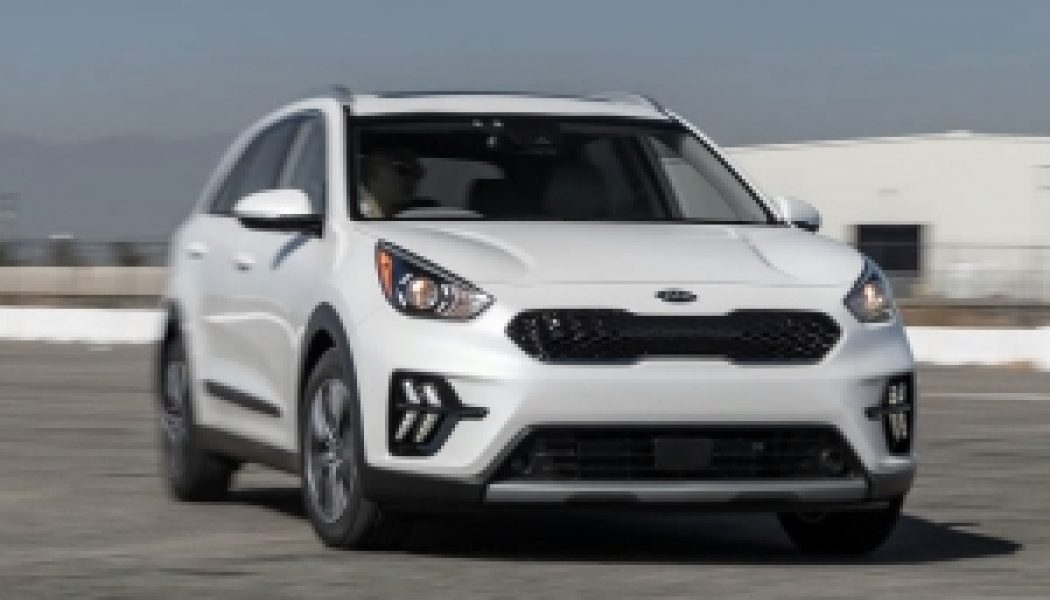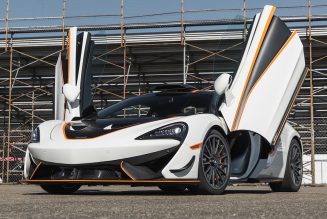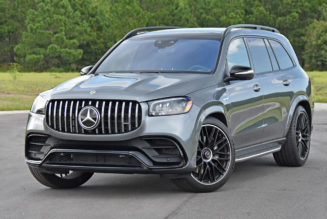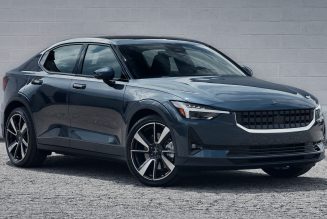As hybrid powertrains make their way into everything from minivans to supercars, their core mission remains the same: making stops at the gas station—and associated openings of your wallet—fewer and farther between. The Kia Niro is a hybrid built to meet that end.
After a year with a 2017 model in our long-term test fleet, we know the Niro well. A 2020 refresh aimed to keep it a viable alternative to hybrid heavy hitters like the Toyota Prius, Honda Insight, and its own platform-mate, the Hyundai Ioniq. How do the Niro’s specs compare to those vehicles? And what else do you need to know about Kia’s dedicated hybrid?
How Quick Is the Kia Niro?
Combined output from the Niro’s electric motor and 1.6-liter gasoline I-4 measures 139 hp and 195 lb-ft of torque. That’s sent to the front wheels by a six-speed dual-clutch automatic (more on that later). At the MotorTrend test track, the Niro posted a 9.2-second 0-60 mph time. That’s quicker than the 121-hp, 105-lb-ft Prius, which hit 60 mph in 9.8 seconds. Although the Ioniq equals the Niro’s power and torque, it did the sprint in 8.4 seconds. All are slower than the Insight, which, packing 152 hp and 200 lb-ft, laid down a 7.3-second run.
Around town, the Niro’s electric motor provides good responsiveness, but it’s not well integrated with the coarse, hesitant gas engine. Eventually, the two power sources combine to get you moving forward, but when they do, the Niro doesn’t feel quick.
What Transmission Is in the Kia Niro?
If the Niro shares anything with sports cars, it’s a dual-clutch automatic transmission. In the right vehicle, these quick-shifting transmissions work wonders. Is the Niro one of them? Not quite. Like with our long-term Niro, the transmission still feels clunky at low speeds, minimizing any smoothness afforded by the electric motor. The Prius and Insight transmissions don’t employ traditional gears, so you’re never aware of any shifting. Feeling the Niro shift through its six gears highlights the disconnect between its gas and electric power sources. It ain’t a sports car—the Niro would be better suited by a similar CVT setup.
How Are the Niro’s Brakes?
In hybrids and EVs, brake blending—that is, how well the regenerative and friction braking systems work together—can be a challenge. When well executed, your stops will be smooth and seamless. When poorly executed—well, just look at the Niro. From speed, pressing its squishy pedal produces mild deceleration on regen alone. Then, as the speedometer drops toward zero, its friction brakes clamp abruptly. Even after a few days of driving, the Niro’s poor brake blending made it impossible to stop gently or accurately.
At the test track, the Niro’s best 60-0 mph stop measured 132 feet, trailing the Insight by 10 feet. Unlike in the Kia, we found the Honda’s brake pedal to feel linear and predictable. The Prius stops only 1 foot shorter than the Niro, and although its brakes have some grabbiness deeper in the pedal stroke, they don’t cause such discomfort. Meanwhile, the Ioniq halted in 129 feet. Now, if you want one-pedal driving, you can turn up the Niro’s regen strength to almost allow it. Doing so puts more juice back into the battery, contributing to the fantastic fuel economy—isn’t that why you’re looking at this car in the first place?
Which Kia Gets the Best Gas Mileage?
The Niro is the most fuel-efficient fuel-burning Kia, scoring a 52/49/50 mpg city/highway/combined rating from the EPA in its based FE trim. The EX trim we tested rates 51/46/49 mpg. We managed better with our long-term 2017 Niro, finding 51.7 combined in Real MPG testing. That’s good, but not as good as its rivals. Similarly equipped Prius models get a 52 mpg combined rating (with Eco models achieving 56 mpg). Entry-level Insight models also get 52 mpg, but in range-topping Touring trim, the Insight gets 48 mpg combined. Meanwhile the Ioniq ekes out an impressive 55 combined miles from a gallon. Nonetheless, the dots in our 2020 test car’s fuel gauge disappeared incredibly slowly in mixed urban driving, and the range of over 580 miles gives it serious cruiser potential. But is the Niro a car you’d actually want to use for the long haul?
Is the Kia Niro a Good Car?
Inside, build quality feels strong even if there’s an abundance of hard plastic surfaces. The available 10.3-inch infotainment touchscreen looks sharp and colorful running Kia’s user-friendly interface; Apple CarPlay integrates well and takes up the width of the display. There’s plenty of headroom in the spacious first and second rows, although the hatchback cargo area is a bit small at 22.4 cubic feet; the Ioniq and Prius both offer about 26 cubes behind the back seat.
On the road the suspension mostly minimizes harshness, but choppy pavement can cause the Niro to tap dance around. It’s comfortable enough, especially when the available adaptive cruise control and lane-keep assist systems are taking the effort out of highway driving.
The Niro stays true to its hybrid mission of providing great fuel economy and range. It’s simple and straightforward, wearing inoffensive styling and never trying to be something it’s not. If only its clumsy transmission and grabby brakes didn’t so harsh the mellow. Whether measured on performance, fuel efficiency, or personality, more of it would make the Niro worthy of a closer look.
| 2020 Kia Niro Eco Hybrid (EX Premium) Specs | |
| BASE PRICE | $33,910 |
| PRICE AS TESTED | $34,585 |
| VEHICLE LAYOUT | Front-engine, FWD, 5-pass, 4-door hatchback |
| ENGINE | 1.6L/104-hp/109-lb-ft Atkinson-cycle DOHC 16-valve I-4, plus 43-hp/125-lb-ft elec motor; 139 hp/195 lb-ft (comb) |
| TRANSMISSION | 6-speed twin-clutch auto |
| CURB WEIGHT (F/R DIST) | 3,215 lb (60/40%) |
| WHEELBASE | 106.3 in |
| LENGTH x WIDTH x HEIGHT | 171.5 x 71.1 x 60.8 in |
| 0-60 MPH | 9.2 sec |
| QUARTER MILE | 17.0 sec @ 81.7 mph |
| BRAKING, 60-0 MPH | 132 ft |
| LATERAL ACCELERATION | 0.80 g (avg) |
| MT FIGURE EIGHT | 28.4 sec @ 0.58 g (avg) |
| EPA CITY/HWY/COMB FUEL ECON | 51/46/49 mpg |
| ENERGY CONS, CITY/HWY | 66/73 kWh/100 miles |
| CO2 EMISSIONS, COMB | 0.40 lb/mile |










